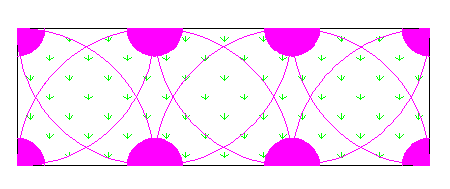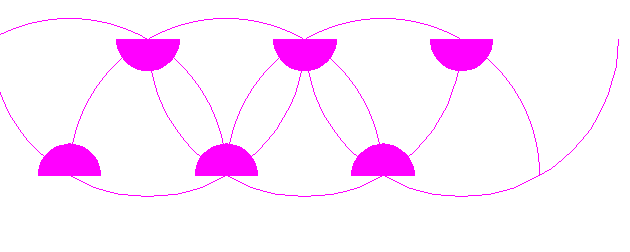- Last updated Oct 14, 2021
- Agricultural Irrigation, Overhead irrigation
Irrigation Sprinklers
An irrigation sprinkler/ water sprinkler/simply a sprinkler is a device used to irrigate agricultural crops, gardens, landscapes, golf courses, and other areas. In addition to this, they are used for cooling and for controlling airborne dust. In Sprinkler irrigation water is applied in a controlled manner and made to splash in a way similar to rainfall. The water is distributed through a network that might consist of pumps, valves, pipes, and sprinklers.
Irrigation sprinklers can be used for areas such as residential, industrial, and agricultural usage. It is useful on uneven land where there is insufficient water. The perpendicular pipes fixed with rotating nozzles on top are joined to the main pipeline at regular intervals. As water is pressurized through the main pipe it escapes from the rotating nozzles. This water gets sprinkled on the target surface. In sprinkler/overhead irrigation, water is piped to one more central location within the field and is distributed by means of overhead high-pressure sprinklers or guns.
Factors to be considered when selecting a sprinkler system
- Precipitation rate
- Water distribution uniformity
- Evapouration loss during sprinkler selection
- Soil infiltration rate
- Maximum length of latterals
- Head loss in the riser tube
- Sprinkler water trajectory
Precipitation rate
Measures the average amount of water applied to an irrigated area over a period of time. unit is mm / h (millimeters per hour).
Calculating precipitation rate (pr)
Pr (mm/h) = Sprinkler flow rate (m3/h) / [Spacing between sprinklers in the same row (m) x Spacing between rows (m)]
For eg:
Sprinkler flow rate = 0.5 m3/h
Spacing between sprinklers on the same row =10 m
Spacing between rows = 12 m
Pr = 0.5 / (10 x 12) = 4.17 mm / h
Water distribution uniformity
It is important to distribute the irrigation water as evenly as possible throughout the irrigation Properly designed sprinklers for the area enable more distribution uniformity.
There are 3 methods for calculating distribution uniformity:
• Christiansen Coefficient of Uniformity (%CU)
• Distribution Uniformity (%DU)
• Scheduling Coefficient (SC)
% CU is a measure of uniformity expressed as the average rate (%) of deviation from the overall average application. 100% CU represents a perfectly integrated application. Lower uniformity represents the lowest percentage of applications.
% DU is a unified measure, comparing the dry 25% of the surveyed area with the average average net application.
The scheduling coefficient is a run-time multiple. This is the time when one should not over-water
Get the average application rate for the whole area in the driest part of the irrigation zone.
Sprinkler spacing pattern
It is important to get the best water supply uniform with any sprinkler Plan an adequate sprinkler spacing pattern.
There are 2 main types of sprinkler spacing patterns:
- Rectangular pattern
- Triangular pattern
Rectangular pattern

Triangular pattern

Evaporation loss during sprinkler irrigation
During sprinkler operation, some water evaporates when the droplets are sprayed through the air.
Sprinkler evaporation loss can be reduced by changing the sprinkler operating conditions to increase water. Operate the system in droplet size or low weather conditions (high RH, low air) Temperature and low wind speed). Night and early morning weather requirements are low, so better to plan watering in that time.
Soil infiltration rate
Infiltration is the process by which water from the earth's surface enters the soil. In soil science, infiltration is the rate at which the soil can absorb rain or irrigation. It is measured in millimeters per hour or inches per hour. The rate decreases as the soil become saturated. If the rainfall is high
Infiltration rate, a flow usually occurs if there is no physical obstruction. Related to this saturated hydraulic conductivity of soil near the surface. An infiltration rate can be measured by Infiltrometer.
Maximum length of lateral
The maximum length of the lateral is reached when there is a 20% difference between the inlet pressure of the sprinkler receiving the highest pressure and the inlet pressure. A sprinkler that receives the lowest pressure along the lateral (20% pressure difference corresponds to a 10% flow rate difference, which is the maximum acceptable for defining integrated irrigation). The choice of lateral diameter should be based on the required flow rate. This is the factor that has the greatest influence on the maximum length of the lateral.
Head loss in the riser tube
The head loss in the riser tube is defined by 2 factors:
- Friction loss
- Elevation loss
Friction loss
The friction loss inside the riser tube, depends on:
• The flow rate
• The inside diameter (ID) of the riser tube
• The length of the riser tube
• The internal texture (roughness) of the riser tube (C)
Elevation loss
The elevation loss depends on the elevation of the sprinkler above the lateral (1 meter = 0.1 bar).
Sprinkler water trajectory
It depends on
1. Sprinkler nozzle angle
2. Elevation of sprinkler nozzle above ground 3. Elevation of max. trajectory height above sprinkler nozzle
4. Distance of max. trajectory height from sprinkler nozzle
5. Max. wetted distance (dependant on sprinkler nozzle elevation above ground).